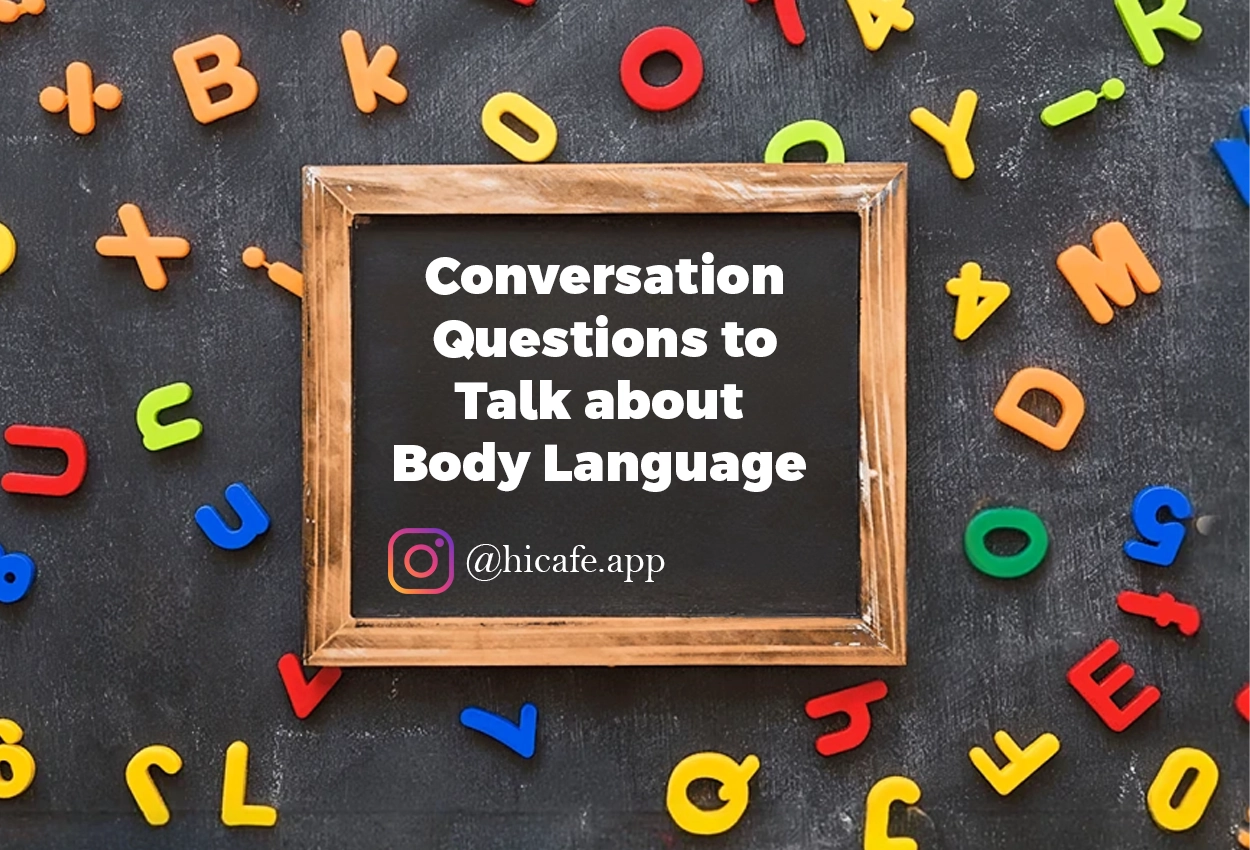Advance Level Conversations- Series 4- Lesson 5- Talk about body language
In this lesson, you learn 10 conversation questions about body language with sample answers for having a normal conversation discussing body language. We also have added 10 extra conversation questions if you decide to extend your discussion. Body language is a powerful form of non-verbal communication that often speaks louder than words. From a simple smile to a firm handshake, our gestures and posture convey emotions, intentions, and attitudes. This will help to understand body language and can greatly improve personal and professional interactions.
Previous Conversation Lesson
Conversation Questions about Gender
1- Why do you think body language is important?
Body language is important because it helps express feelings and intentions without using words. Sometimes, what we say might not match how we truly feel, but our body language can reveal the truth. It also helps people understand each other better, especially in situations where language is a barrier. For example, a smile can show kindness across cultures. It plays a big role in making communication feel more personal and genuine.
2- How do you use body language in your daily life?
I use body language all the time without even realizing it. When I greet someone, I smile and make eye contact to show friendliness. I nod to show agreement or understanding when someone is talking. I also use hand gestures while explaining something to make my point clearer. Even when I’m tired or uninterested, my posture or facial expressions often give it away.
3- How does body language help you to communicate?
Body language adds emotion and clarity to what I say. For example, when I’m excited, my eyes light up and I use bigger gestures, which makes my message more lively. It also helps others feel more connected to what I’m saying. Sometimes, when I can’t find the right word, my expressions or gestures help fill in the gaps. It’s like a silent language that supports my voice.
4- How does your native culture use body language?
In my culture, respect is often shown through body language, like avoiding direct eye contact with elders. We use gestures like bowing slightly or pressing our hands together when greeting someone formally. At school, students usually raise their hands to speak or nod to show understanding. Boys might use confident posture, while girls may use more polite or reserved gestures. Children often show excitement through jumping or clapping.
5- What actions are threatening?
Threatening body language includes clenched fists, standing too close, or pointing aggressively. A hard stare or intense eye contact without blinking can feel intimidating. Rapid or exaggerated movements can also make someone feel unsafe. Yelling with big hand gestures can seem aggressive too. Sometimes, just having a tense body or puffed-up chest can come off as threatening.
6- What actions are friendly?
Friendly actions include smiling, open arms, and relaxed posture. A gentle handshake or a wave when you see someone also shows kindness. Making eye contact (but not staring) and nodding while listening shows interest and care. A light touch on the shoulder, in the right setting, can feel comforting. Even standing at a comfortable distance can make others feel welcome.
7- Do you use body language to express love to your intimate partner?
Yes, I do use body language to express love. A warm hug or holding hands shows closeness and comfort. Making soft eye contact and smiling often tells them I care. Sometimes, a simple touch or leaning in while talking helps build connection. Even sitting close or facing them directly during conversation expresses affection.
8- Do you try to use body language when you communicate in English?
Yes, especially when I speak English, I use body language to help get my message across. Since it’s not my first language, gestures and facial expressions help me explain what I mean. For example, I use my hands when I describe something or raise my eyebrows when I ask questions. It helps the other person understand better even if I forget a word. It also makes the conversation feel more natural.
9- If you visit a new country, how does their eye contact differ from your native country?
Eye contact can really differ from place to place. In my country, too much eye contact with elders might be seen as disrespectful. But in some countries, not making eye contact can seem rude or like you’re hiding something. So, when I travel, I try to observe how locals behave and follow their lead. It helps me avoid misunderstandings and show respect.
10- How can you misinterpret someone’s body language?
It’s easy to misinterpret body language if you don’t understand the person’s background or emotions. For example, someone crossing their arms might just be cold, not angry. A lack of eye contact might mean they’re shy, not dishonest. Cultural differences also play a big role, what’s polite in one country might be rude in another. That’s why it’s important to not jump to conclusions and consider the situation.
Next Conversation Lesson
Conversation Questions about USA Geography
Related Conversation Lessons
None
Practice Conversation with HiCafe App
By using HiCafe App, you can join free discussion events and Practice English Conversation online or in-person and improve your verbal skills.
All Conversation Lessons
To see and read all of our conversation lessons, you can visit our Improve English Speaking Skills page.



